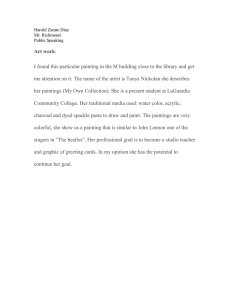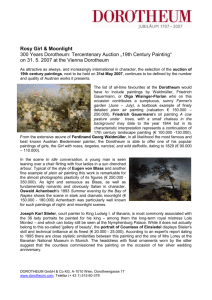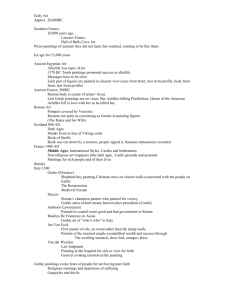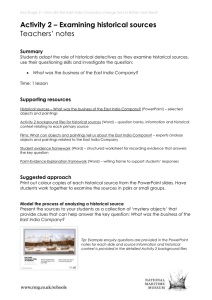LY TONY Carlin 10-05-27
advertisement
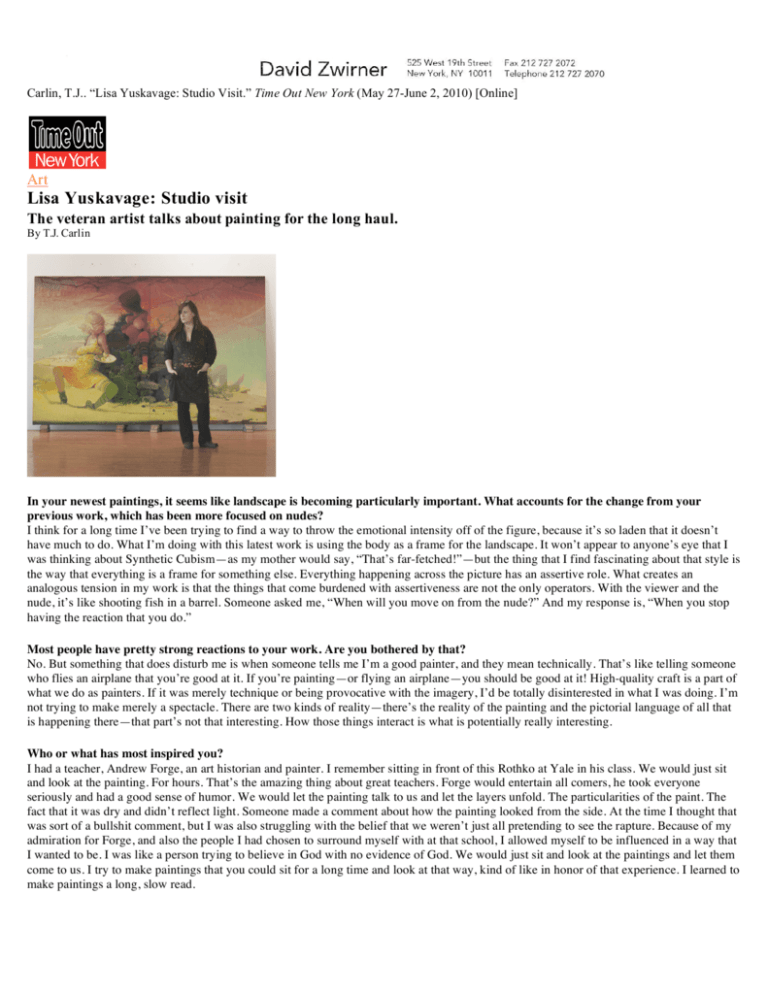
Carlin, T.J.. “Lisa Yuskavage: Studio Visit.” Time Out New York (May 27-June 2, 2010) [Online] Art Lisa Yuskavage: Studio visit The veteran artist talks about painting for the long haul. By T.J. Carlin In your newest paintings, it seems like landscape is becoming particularly important. What accounts for the change from your previous work, which has been more focused on nudes? I think for a long time I’ve been trying to find a way to throw the emotional intensity off of the figure, because it’s so laden that it doesn’t have much to do. What I’m doing with this latest work is using the body as a frame for the landscape. It won’t appear to anyone’s eye that I was thinking about Synthetic Cubism—as my mother would say, “That’s far-fetched!”—but the thing that I find fascinating about that style is the way that everything is a frame for something else. Everything happening across the picture has an assertive role. What creates an analogous tension in my work is that the things that come burdened with assertiveness are not the only operators. With the viewer and the nude, it’s like shooting fish in a barrel. Someone asked me, “When will you move on from the nude?” And my response is, “When you stop having the reaction that you do.” Most people have pretty strong reactions to your work. Are you bothered by that? No. But something that does disturb me is when someone tells me I’m a good painter, and they mean technically. That’s like telling someone who flies an airplane that you’re good at it. If you’re painting—or flying an airplane—you should be good at it! High-quality craft is a part of what we do as painters. If it was merely technique or being provocative with the imagery, I’d be totally disinterested in what I was doing. I’m not trying to make merely a spectacle. There are two kinds of reality—there’s the reality of the painting and the pictorial language of all that is happening there—that part’s not that interesting. How those things interact is what is potentially really interesting. Who or what has most inspired you? I had a teacher, Andrew Forge, an art historian and painter. I remember sitting in front of this Rothko at Yale in his class. We would just sit and look at the painting. For hours. That’s the amazing thing about great teachers. Forge would entertain all comers, he took everyone seriously and had a good sense of humor. We would let the painting talk to us and let the layers unfold. The particularities of the paint. The fact that it was dry and didn’t reflect light. Someone made a comment about how the painting looked from the side. At the time I thought that was sort of a bullshit comment, but I was also struggling with the belief that we weren’t just all pretending to see the rapture. Because of my admiration for Forge, and also the people I had chosen to surround myself with at that school, I allowed myself to be influenced in a way that I wanted to be. I was like a person trying to believe in God with no evidence of God. We would just sit and look at the paintings and let them come to us. I try to make paintings that you could sit for a long time and look at that way, kind of like in honor of that experience. I learned to make paintings a long, slow read.
